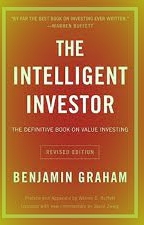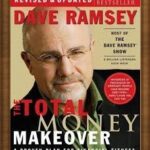: The intelligent investor:
“The Intelligent Investor” by Benjamin Graham is a classic investment book that emphasizes a disciplined and value-oriented approach to investing. In over 600 pages, Graham lays out various principles and strategies for achieving success in the stock market. Here’s a summarized version of the key takeaways and examples from the book:
1. Importance of Investing vs. Speculating:
Graham differentiates between investing and speculating. Investing involves a thorough analysis of a company’s fundamentals, while speculating relies on market timing and short-term fluctuations. He encourages readers to be investors rather than speculators, as investing with a long-term perspective leads to more consistent returns.
2. Margin of Safety:
One of the central tenets of Graham’s philosophy is the concept of the “margin of safety.” He advises investors to only purchase stocks at a significant discount to their intrinsic value. By doing so, investors protect themselves against unforeseen events and market downturns.
Example: If a stock’s intrinsic value is estimated at $100 per share, a margin of safety approach might involve purchasing the stock at $70 or lower.
3. Mr. Market Analogy:
Graham uses the analogy of Mr. Market to illustrate how the stock market behaves irrationally and emotionally. Mr. Market offers you a price every day to buy or sell stocks, and these prices can be highly volatile and unrelated to a company’s true value. The wise investor should not be influenced by Mr. Market’s mood swings and should base decisions on sound analysis.
Example: Mr. Market might offer you $50 for a stock one day and $70 the next, despite no significant change in the company’s underlying business.
4. Defensive vs. Enterprising Investors:
Graham categorizes investors into two types: defensive and enterprising. Defensive investors are risk-averse and prefer a more passive approach, investing in diversified portfolios of low-cost index funds or blue-chip stocks. Enterprising investors, on the other hand, are willing to put in more effort and research to seek out individual bargains and achieve higher returns.
Example: A defensive investor might choose to invest in a low-cost S&P 500 index fund, while an enterprising investor might analyze specific companies and industries for undervalued opportunities.
5. Stock Selection Criteria:
Graham lays out specific criteria for stock selection, including financial stability, adequate size, and a history of consistent dividends. He advises against investing in speculative or highly leveraged companies.
Example: A company with a long history of stable earnings, no excessive debt, and a track record of paying dividends might be considered a suitable investment candidate.
6. Dollar-Cost Averaging:
Graham advocates for dollar-cost averaging, which involves investing a fixed amount regularly, regardless of market conditions. This strategy reduces the impact of market fluctuations and helps build wealth steadily over time.
Example: An investor commits to investing $500 per month in a particular stock or mutual fund, regardless of whether the market is up or down.
7. Value Investing:
Graham is considered the father of value investing, which involves finding undervalued stocks and holding them for the long term. He emphasizes analyzing a company’s fundamentals, including earnings, assets, and debt, to determine its intrinsic value.
Example: Identifying a company whose stock is trading below its estimated intrinsic value due to temporary market pessimism or external factors.
8. Emotional Discipline:
Graham stresses the importance of emotional discipline in investing. Successful investors should not be swayed by market hype or fear and should avoid making impulsive decisions.
Example: Avoiding panic selling during a market downturn and sticking to a well-thought-out investment plan.
9. Market Fluctuations and Inefficiencies:
Graham acknowledges that market fluctuations and inefficiencies are normal. He suggests that investors can take advantage of these fluctuations to buy undervalued stocks or sell overvalued ones.
Example: Buying shares of a fundamentally sound company when the overall market sentiment is negative and the stock is trading at a discount.
These key takeaways and examples offer a condensed overview of the wealth of information provided in “The Intelligent Investor.” However, it’s important to note that reading the full book will provide a more comprehensive understanding of Graham’s investing philosophy and strategies.


